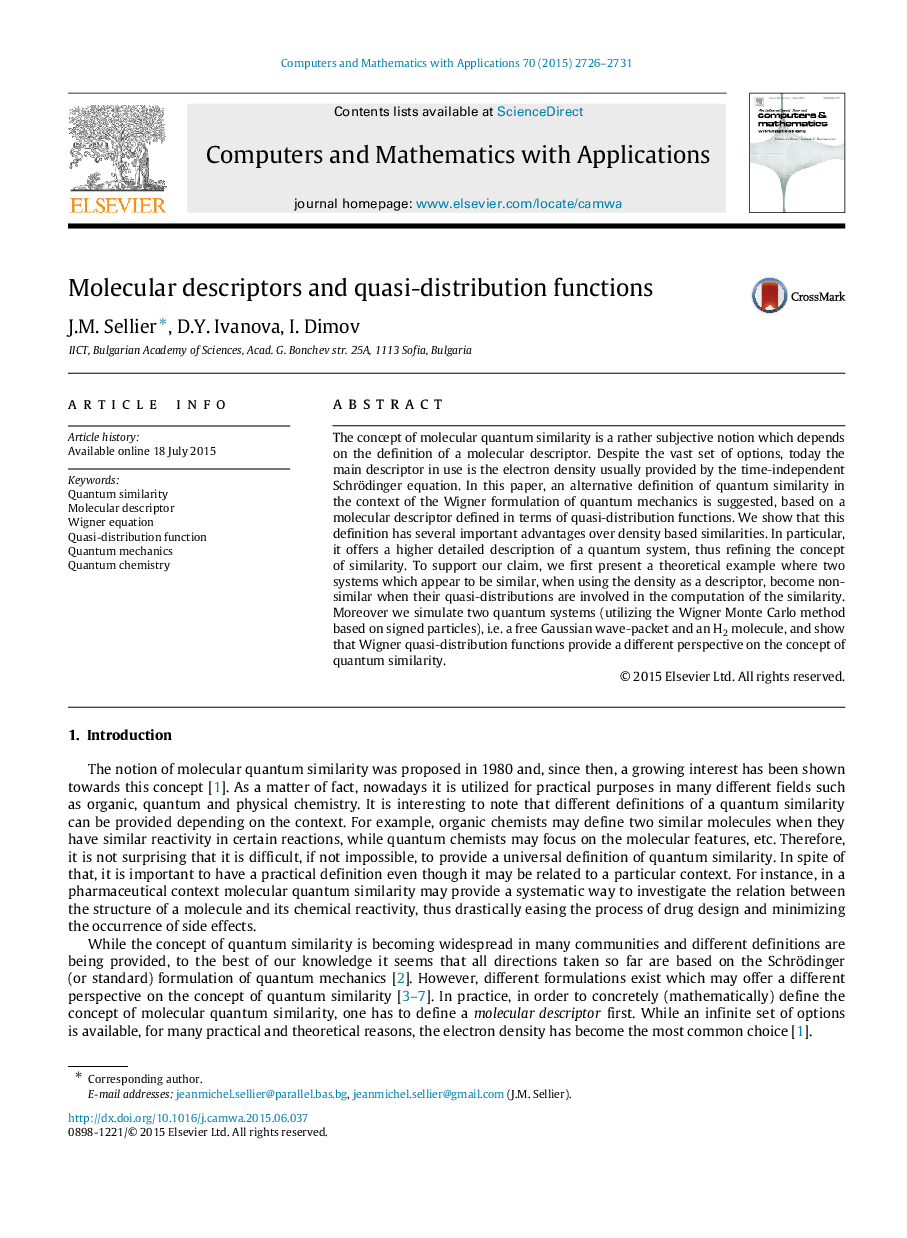| کد مقاله | کد نشریه | سال انتشار | مقاله انگلیسی | نسخه تمام متن |
|---|---|---|---|---|
| 472156 | 698693 | 2015 | 6 صفحه PDF | دانلود رایگان |
The concept of molecular quantum similarity is a rather subjective notion which depends on the definition of a molecular descriptor. Despite the vast set of options, today the main descriptor in use is the electron density usually provided by the time-independent Schrödinger equation. In this paper, an alternative definition of quantum similarity in the context of the Wigner formulation of quantum mechanics is suggested, based on a molecular descriptor defined in terms of quasi-distribution functions. We show that this definition has several important advantages over density based similarities. In particular, it offers a higher detailed description of a quantum system, thus refining the concept of similarity. To support our claim, we first present a theoretical example where two systems which appear to be similar, when using the density as a descriptor, become non-similar when their quasi-distributions are involved in the computation of the similarity. Moreover we simulate two quantum systems (utilizing the Wigner Monte Carlo method based on signed particles), i.e. a free Gaussian wave-packet and an H22 molecule, and show that Wigner quasi-distribution functions provide a different perspective on the concept of quantum similarity.
Journal: Computers & Mathematics with Applications - Volume 70, Issue 11, December 2015, Pages 2726–2731
